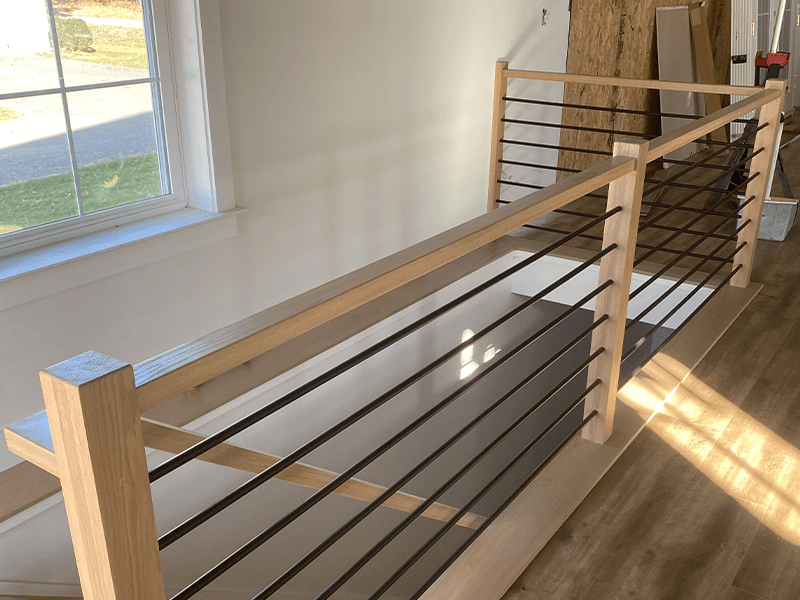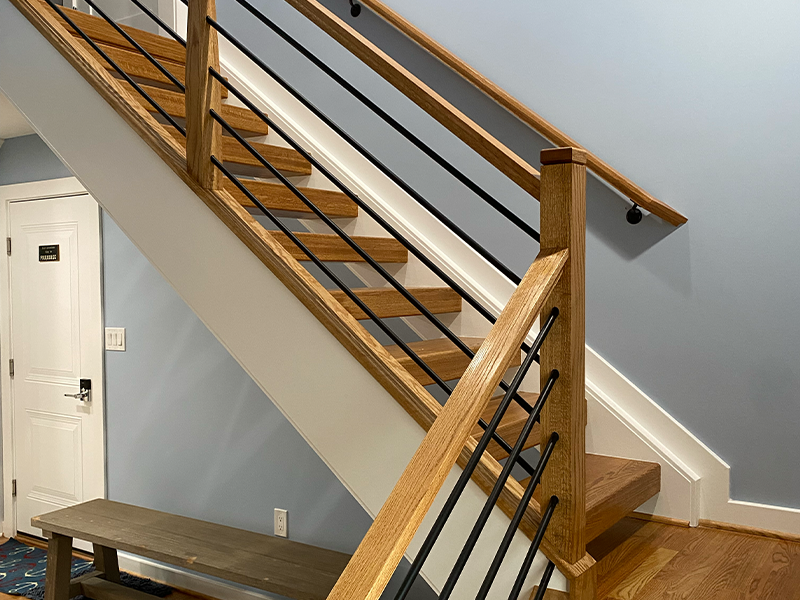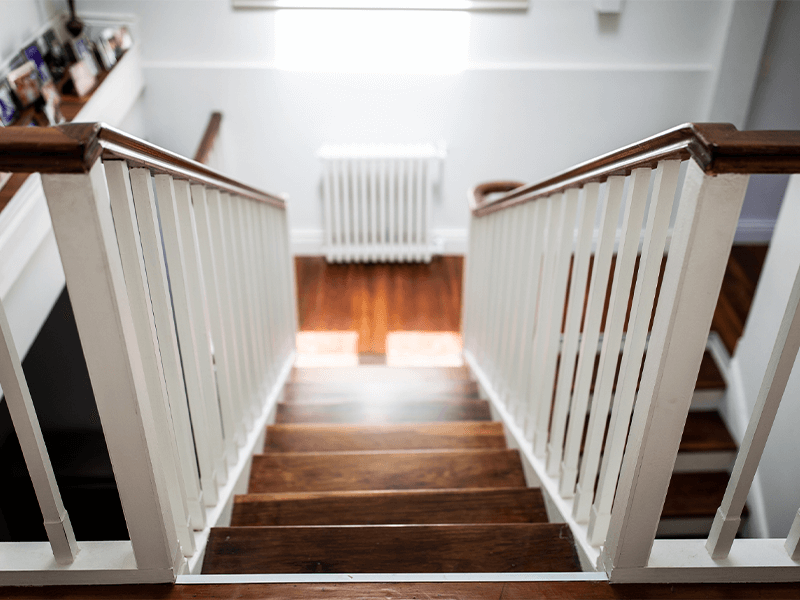When it comes to staircase renovations, stair railings often take a backseat to steps and treads. However, custom stair railings are more than just support structures — they’re essential for safety, and they also improve the look and feel of your home in no little way. Whether you’re updating a dated design or building a new staircase, custom stair railings can dramatically impact both safety and style.
Why Stair Railings Matter
The Dual Role: Function and Form
Stair railings serve two primary purposes: ensuring safety and enhancing aesthetic appeal. On one hand, they prevent falls and provide stability when climbing stairs. On the other hand, they offer a visual anchor and often set the tone for a home’s interior design. For homeowners looking to renovate, ignoring the importance of railings can mean missing out on both safety improvements and serious style upgrades.
Building Code Compliance
In many jurisdictions, stair railings are required by building codes, and for good reason. They protect all age groups, from young children to the elderly. A professionally installed custom railing, therefore, guarantees not only aesthetic beauty but also compliance with safety standards.
How Custom Railings Enhance Safety
Ergonomically Designed for Better Grip
Prefabricated railings often lack ergonomic consideration. At Darby, we design railings that are comfortable to grip and customized to your specific needs. Whether you have elderly parents living at home or simply want extra stability, we ensure each design supports better, safer movement.
Proper Height and Spacing
Custom stair railings allow for personalized adjustments in height and spacing, crucial factors in preventing accidents. Our team evaluates your staircase layout, wall spacing, and the user’s needs to create a rail that’s not just compliant, but comfortable and secure.
Durable, Long-Lasting Materials
Aesthetic railings are only valuable if they’re built to last. Darby uses high-quality woods, metals, and finishes that offer excellent grip, withstand wear and tear, and resist loosening over time. This durability ensures the railing remains safe long after installation.
Better Visibility and Navigation
With the right lighting and material combinations, custom railings can also improve visibility on staircases. Our design team frequently integrates railing solutions that highlight the stair edge or match natural lighting to improve safety, especially in dim hallways or basements.
The Aesthetic Impact of Custom Stair Railings
Custom Design to Match Home Décor
Every home has its unique character. Custom railings give you the flexibility to match or enhance your home’s style, whether that’s sleek and modern, rustic farmhouse, traditional elegance, or minimalist chic. Darby offers design consultations to help you choose the perfect material, shape, and finish to complement your space.
Material Variety: Wood, Metal, Glass, and More
At Darby, we work with a wide range of materials, including:
- Hardwoods (like oak, walnut, or maple) for warm, timeless elegance
- Wrought iron for ornate, traditional designs
- Stainless steel for modern, industrial vibes
- Glass for a minimalist, open-concept look
This allows us to blend function with fashion, creating railings that are both eye-catching and practical.
Open Up Space with Strategic Designs
In smaller homes or narrow stairwells, a bulky railing can make the area feel confined. We specialize in slimline, open-concept railing designs that maximize visibility and make tight areas feel more spacious, without compromising safety.
Practical Tips for Choosing the Right Custom Railing
1. Define Your Home’s Style
Before choosing a railing, take stock of your existing décor. Are your furnishings modern, traditional, or eclectic? Your railing should harmonize with this style. Our design experts at Darby can help identify options that blend seamlessly into your interior.
2. Prioritize Daily Use and Foot Traffic
Busy households with kids and pets may need different railing materials and finishes than a quiet adult household. For example, metal railings with powder coating are highly resistant to scuffs and scratches, while hardwoods with matte finishes hide fingerprints well.
3. Consider Maintenance Needs
Different materials have different care requirements. If you want something low-maintenance, a metal or composite railing might be better than stained wood. We guide our clients on material choices based on lifestyle and cleaning preferences.
4. Add Custom Details
Small details can have a big impact. From post caps and spindles to scrollwork and lighting, our team incorporates custom touches that elevate your stairway into a work of art.
Why Choose Darby Stair Renovations?
Local Expertise with a Focus on Craftsmanship
Darby Stair Renovations specializes in staircase transformations with a focus on railings, trim work, and stair rebuilds. Our team brings decades of combined experience to each project, ensuring you get both craftsmanship and care.
Collaborative Design Process
We don’t just build, we collaborate. Every client receives a consultation where we review styles, goals, and constraints. Your vision guides our work, and our expertise ensures it’s executed beautifully and safely.
Fast, Clean Installations
We respect your home. That means fast turnarounds, minimal disruption, and pristine cleanup. Our streamlined installation process is designed to work around your schedule without cutting corners.
Fully Custom, Never Cookie-Cutter
At Darby, no two railing projects are the same. From curved staircases to landings and lofts, we provide fully custom solutions tailored to your specific layout and design goals.
Style and Safety Go Hand in Hand
Stair railings are one of the most overlooked yet essential parts of your home. With the right custom design, they offer enhanced safety, visual impact, and increased property value. At Darby Stair Renovations, we specialize in stair transformations that blend beauty and function. And the best part? Our expert team is here to guide you every step of the way once you reach out to us!







